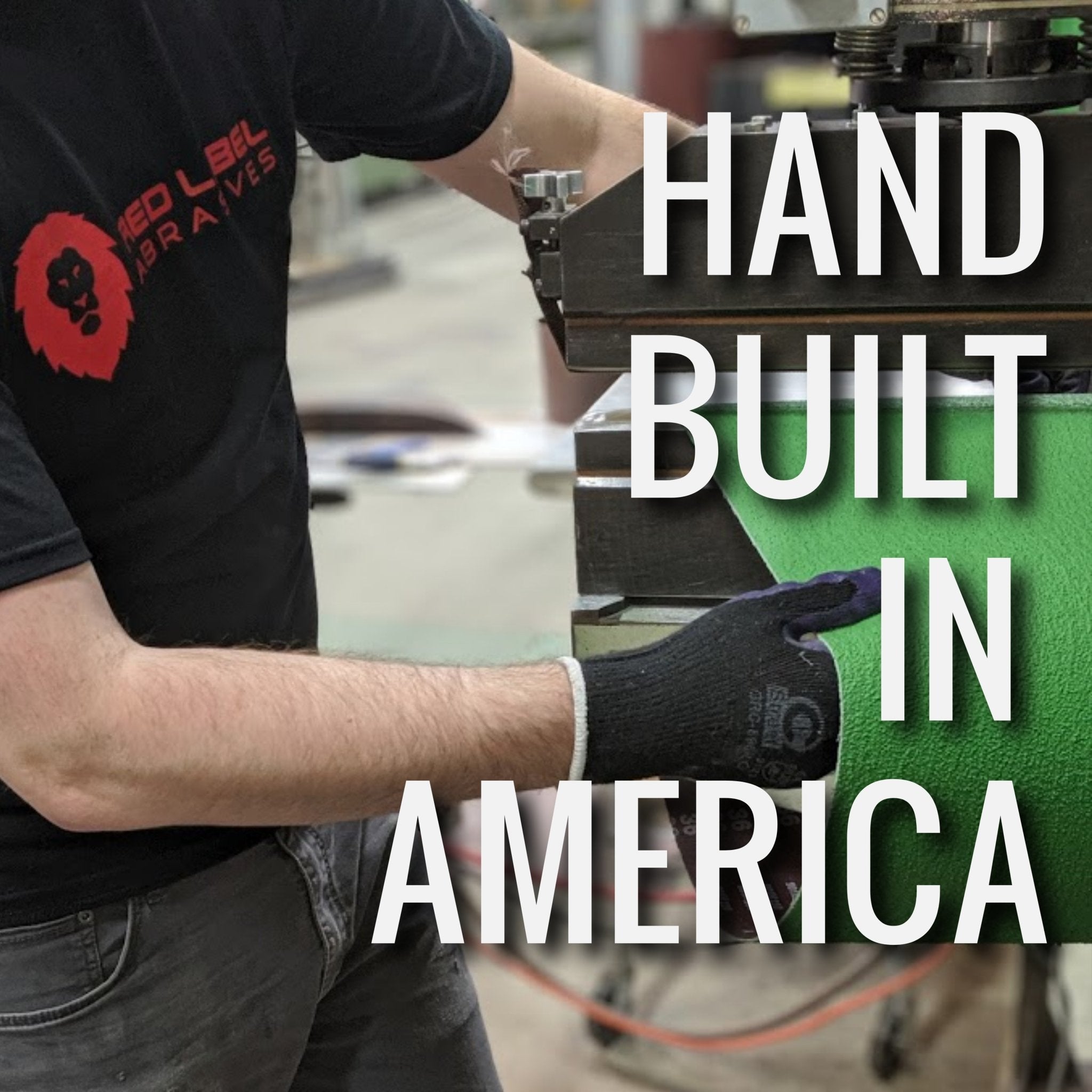Your Cart is Empty
Free Shipping over $150 (Excludes Oversized Products) | Office Closed 12/24-26 & 12/31-1/2
Free Shipping over $150 (Excludes Oversized Products) | Office Closed 12/24-26 & 12/31-1/2
Sanding Belts
Sanding Discs

The Best Steel for Knifemaking
by David Kranker 11 min read

Quick Summary
There is no one type of steel that is definitively the best for knifemaking. The best steel for your blade will depend on your preferences, the preferences of your customers, and the type of blade you’re producing. However, the most common types of steels used for knifemaking include carbon steel, stainless steel, and tool steel.
Topics Covered:
- What Qualities Should You Look For in Knifemaking Steel?
- Knife Steel Composition
- Steel Naming Conventions
- Common Knife Steel Types?
- The Most Popular Knife Making Steels Overall
- The Most Popular Knife Making Steels By Knife Type
- Which Steel Is Best?
- Contact an Industrial Abrasive Specialist
When you make knives, the secret to success is using the right materials. Although design and formation techniques are important, the type of steel you use makes a key difference in how your finished knife performs.
Steel is basically an alloy of iron and carbon enriched with other elements to improve desired results. They include, but are not limited to, manganese, phosphorus, silicon, and sulfur. However, when it comes to steel for knives, not all steel is created equal.
What Qualities Should You Look For In Knife Making Steel?
To produce a high-quality knife, you want to use a steel that is:
- Strong
- Resilient
- Easy to shape and work with
- Ductile (can bend without breaking)
- Corrosion-resistant
- Wear-resistant
- Capable of holding an edge
- Hard enough to resist deformation
Knife Steel Composition
When you shop for knifemaking steel, you’ll usually come across those with iron, carbon, and one or more additional alloying elements. Below is a list of the various elements used in knife steel along with the properties they contribute.
| Carbon | Increases hardness and edge retention |
| Chromium | Increases hardness and corrosion resistance |
| Molybdenum | Increases toughness |
| Nickel | Increases toughness |
| Vanadium | Increases wear resistance |
| Cobalt | Increases hardness |
| Manganese | Increases strength and wear resistance |
| Silicon | Increases strength |
| Niobium | Increases corrosion resistance and wear resistance |
| Tungsten | Increases toughness and wear resistance |
| Sulfur | Increases machinability |
| Phosphorus | Increases corrosion resistance and hardness |
| Nitrogen | Increases corrosion resistance and hardness |
| Copper | Increases deoxidation |
| Aluminum | Increases deoxidation |
| Boron | Increases hardenability |
| Lead | Increases machinability |
| Selenium | Increases machinability |
| Tantalum | Increases hardness and wear resistance |
| Zirconium | Increases toughness |
Steel Naming Conventions
Understanding the naming conventions used for steel can help you understand the composition and properties of different types of steel. Carbon steel and alloys are identified using a coding system derived from the American Iron and Steel Institute (AISI) and the Society of Automotive Engineers (SAE). SAE and AISI naming conventions use a four-digit number to classify steel. The first two digits identify the materials used while the last two indicate the percentage of carbon in the composition.
Common Knife Steel Types
Two types of steel can be as different from each other as iron and bronze. Therefore, steel producers follow a precise ‘recipe’ every time they make a particular type. Each of these combinations (which also vary in proportions) has its own name, so that customers know exactly what they’re getting.
The list below covers the steels commonly used in knifemaking.
Carbon Steel
Carbon steel produces a sharp, strong blade that’s easy to resharpen, making it ideal for creating machetes, bowie knives and other tools intended for heavy-duty work.
The C10_ series steels are a popular choice: the ‘C’ identifies it as carbon still while the ‘10’ indicates that it is plain carbon steel with a maximum of 1% manganese. The last two digits state the carbon percentage in the alloy: for example, C1045 has 0.45% carbon. Whenever possible, go for a steel with 0.30%-0.60% carbon because they are sufficiently hard without becoming too brittle during processing.
Carbon steel grades commonly used to fashion blades include C1045, C1075, C1090, and C1095. Out of all of them, 1095 is most frequently used for knifemaking. It contains 95% carbon, which improves hardness and wear resistance.
Stainless Steel
Stainless steel specifications usually appear in three-digit format, with each number identifying an aspect of its composition. (For example, the first digit specifies the type of iron used.) Most knifemakers use the 400 series. For example:
420
420 is cutlery grade, with around .38% carbon and a minimum of 12% chromium in its content. The comparatively low carbon content means that it’s a softer steel and won’t hold an edge too well. If you make a knife from this material, you’ll have to sharpen it frequently and watch out for chipping. On the plus side, it’s highly corrosion-resistant, which makes it a great material for wet applications, such as diving knives.
440
440 is a higher-grade cutlery steel with better hardness and edge retention. There are three different types:
- 440A: This type has a carbon content range of .65% to .75%. Of all the 440 steels, this one is the most rust-resistant.
- 440B: This steel has a higher carbon content- typically .75% to .95%, so it retains sharp edges more effectively.
- 440C: 440C steel is considered higher end due to its carbon content range of .95% to 1.20%.
AUS Series
This knifemaking steel from Japan has vanadium added, which makes it tougher, more wear-resistant, and easier to sharpen. Commonly-used grades in knifemaking include:
- AUS-6: This type has .65% carbon and holds an edge fairly well.
- AUS-8: This steel is fairly popular because it has .75% carbon and more vanadium, allowing it to hold an edge better.
- AUS-10: This option has 1.1% carbon and even more vanadium.
ATS Series
Of all the steels in the ATS series, ATS 34 is considered the best for knifemaking. It has a carbon content of 1.05% and is often used to make higher-end knives.
SXXV Series
This steel series is becoming popular due to its strength, corrosion resistance, and ability to hold a sharp edge. Bear in mind, however, that they can be difficult to sharpen. The types used most often for knifemaking are the 30, 60, and 90, which refers to their 3%, 6%, and 9% vanadium content in the alloy.
Tool Steel
Tool steel is a hard and durable material that contains different alloys to boost important properties, like heat resistance. Its ability to maintain function and form under heated pressure makes it the steel of choice for industrial tools.
Tool steels commonly used for knifemaking include:
- A2: Not as hard, but exceptionally tough. It typically consists of 1% carbon and 5% chromium.
- D2: Corrosion resistant and excellent edge retention, but not as tough. The percentages of carbon and chromium are higher.
- M2: Retains a perfect edge but hard enough to become brittle, making it too fragile for certain applications. It is molybdenum-based.
On the downside, tool steel doesn’t have a smooth finish and is less corrosion-resistant than stainless steel, so you probably wouldn’t use it to make kitchen knives.
Damascus Steel
Damascus steel is produced by forging two different steel grades together and applying an acid-etching process to create beautiful, unique patterns. Although they are better known for their aesthetic appeal, damascus steel knives can also be strong and durable, depending on materials used and forging skill.
The Most Popular Knife Making Steels Overall
Ultra Premium Steel For Knives
CPM S110V
CPM S110V isn't that common for knife making yet, because it's expensive and difficult to work with. CPM S110V blades also are not fun to sharpen. However, CPM S110V provides incredible wear resistance and edge retention. If you want to produce ultra premium quality knives, then this is a steel worth considering.
CPM S90V
On its face, CPM S90V is almost indistinguishable from CPM S110V outside of a laboratory analysis. CPM S90V can also be difficult to work with and it will take a lot of patience to sharpen, but it withstands abrasions and holds an edge exceptionally well.
M390
M390 is a newer super steel manufactured by Bohler-Uddeholm. This steel is designed to have a high hardness, excellent wear resistance, and great corrosion resistance. Tungsten, vanadium, molybdenum, and chromium are added to M390 to increase edge retention and sharpness. M390 is somewhat difficult to sharpen, but it can be sharpened far faster than CPM S90V. It can easily be polished to achieve a true mirror finish. It also has more free chromium in comparison to ZDP-189 in order to help fight corrosion.
ZDP-189
ZDP-189 is yet another super steel produced by Hitachi. ZDP-189 contains a high level of carbon and chromium to produce a very hard steel. While ZDP-189 is very hard and wear resistance, it's also less corrosion resistant, because there's less free chromium available to battle corrosion.
Elmax
Elmax is a steel with extremely high wear and corrosion resistance. Elmax is a stainless steel with properties similar to carbon steel. It has great edge retention and is one of the easiest super steels to sharpen.
CPM-20CV
CPM-20CV is the Crucible version of M390 steel. It provides high corrosion resistance, wear resistance, and edge retention. M390 is marginally tougher than 20CV, but 20CV has better edge retention.
Premium Steel For Knives
CTS-XHP
CTS-XHP is considered to be a more corrosion resistant form of D2 steel. It's a hard steel that has great edge retention. CTS-XHP is not easy to sharpen and it is prone to chipping.
CPM M4
CPM M4 is a high-performance tool steel from Crucible. It is a tough steel that holds an edge better than any other carbon steel. CPM M4 is not stainless and requires extra care to increase the longevity of the blade. CPM M4 is also relatively difficult to sharpen.
CPM S35VN
CPM S35VN is an upgraded version of S30V steel. CPM S35VN contains small quantities of niobium, which makes the steel tougher and easier to machine.
CPM S30V
CPM S30V is a premium steel produced by Crucible. CPM S30V is very corrosion resistant and it retains an edge really well. It was designed for high-end kitchen cutlery and pocket knives. CPM S30V has a great balance of toughness, hardness, and edge retention.
High End Steel For Knives
154CM
154CM is considered to be an upgraded version of 440C with the addition of molybdenum. 154CM has is similar to 440c in-terms of corrosion resistance, but it has a much higher level of edge retention. 154CM is decently tough and not terribly difficult to sharpen.
ATS-34
ATS-34 is considered the Japanese equivalent to 154CM steel. The properties of ATS-34 steel are almost identical to 154CM steel.
D2
D2 steel is a tool steel classified as semi-stainless. It provides a decent level of corrosion resistance and is much harder than 154CM and ATS-34. The downside to D2 steel is that it is tough to sharpen.
H1
H1 steel is a Japanese stainless steel that does not rust. The high corrosion resistance does come at a price. The edge retention of H1 steel is relatively low. This makes H1 steel ideal for blades used in diving, but not as ideal for EDC blades.
N680
N680 is contains .2% nitrogen and over 17% chromium. This composition makes N680 extremely resistant to corrosion. If you're producing blades commonly used in and around salt water, than N680 will likely be your steel of choice. N680 is considered a cheaper alternative to H1 steel.
Mid-Range Steel For Knives
440C
440C was once the premier steel for high-end knives. It's since been replaced by many of the super steels mentioned above, but it's still a great mid-range steel. It's affordable, wear resistant, stain resistant, and reasonably tough. 440C also holds an edge better than 420HC.
AUS-8
AUS-8 is a Japanese steel that is very similar to 440B. AUS-8 is really easy to sharpen and can be sharpened to a razor edge. It's a tough steel, but its edge retention isn't as high as the premium steels higher on the list.
8Cr13MoV
8CR13MOV originated in China and is pretty comparable to AUS-8. It has slightly more carbon content than AUS-8. 8CR13MOV is relatively affordable and it holds an edge pretty well.
14C28N
14C28N is a stainless steel from Swedish manufacturer, Sandvik. 14C28N contains the addition of nitrogen, which drastically improves corrosion resistance. 14C28N is easy to sharpen and is considered one of the best budget knife steels by many makers.
420HC
420HC is the preferred steel for knife makers out of all of the 420 steels. 420HC contains higher levels of carbon, which makes the steel harder. 420HC is an affordable steel and it's one of the most corrosion resistant steels on the market. 420HC is typically used to produce budget blades that retail for less than $50.
440A
440A and 420HC are very comparable steels. 440A contains slightly more carbon. This composition increases wear resistance and edge retention, but reduces corrosion resistance.
13C26
13C26 is Sandvik’s version of AEB-L steel. It's pretty comparable to 440A steel, but it contains a higher carbon to chromium ratio, which slightly harder and less corrosion resistant.
1095
1095 is one of the most popular steels in the 10-series. 1095 steel is inexpensive, easy to sharpen, and doesn't chip easily. It's often used for fixed blades and survival knives prone to take more abuse than the average everyday knife. However, 1095 does have low corrosion resistance and edge retention properties.
Low End Steel For Knives
420J
420J is still a perfectly good steel for general use knives, even though it's on the lower end of the quality spectrum. Makers producing mass quantity knives at lower price points often prefer 420J. It is highly flexible and extremely stain resistant, but it does produce a softer blade and will lose its edge much quicker than the steels listed above.
AUS-6
AUS-6 is the Japanese equivalent to 420 series steel. AUS-6 displays decent corrosion resistance, but it also loses its edge relatively quickly.
The Most Popular Knife Making Steels By Knife Type
As we previously mentioned, there is no one type of steel that is definitively going to be the best steel for knife making. The ideal steel for your knife project is going to largely depend on how the knife will be used. We've included the most popular knife making steels by knife type below.
Best Steel For Bowie Knives / Machetes
Bowie knives and machetes are survival blades that will take a beating in everyday use. Because these blades will be used for tough jobs, you'll want to use a steel that is hard enough to last, but not so hard that it becomes brittle.
Carbon steel is a popular choice for bowie knives and machetes. Whenever possible, go for a steel with 0.30%-0.60% carbon because they are sufficiently hard without becoming too brittle during processing. C1045 would be a good choice for these types of blades.
Best Steel For Kitchen Knives
Stainless steel tends to be the steel of choice for kitchen knives. Stainless steel is armed with built-in corrosion resistance, which is ideal for knives constantly exposed to acidic substances and water. 420 steel is commonly used for cutlery knives. 440 steel is also popular for higher grade cutlery knives.
Best Steel For Chef Knives
Chefs knives are often produced with stainless steel, because stainless steel is affordable and widely available. However, many professional chefs actually prefer carbon steel knives.
Carbon steel produces harder and sharper knives compared to stainless steel, which are sought-after qualities for culinary professionals. The downside to using carbon steel for chef knives is that carbon steel is not very resistant to corrosion. Carbon steel chef knives need to be oiled frequently to prevent rust formation and discoloration.
Do All Blades From The Same Steel Perform The Same?
While the steel you choose is a big factor in dictating how your blade performs, it's not the only factor. It's important to remember that a lot of the blades final properties come from heat treating. You'll want to hone your heat treating skills before buying premium steels. High quality steel subjected to poor heat treatment can result in a low-quality blade. Heat treating is performed to bring out the best in the steel's inherent characteristics. Red Label has an entire post dedicated to heat treating a knife if you'd like to learn more.
Which Steel Is Best?
Ultimately, there is no one type of steel that is definitively better than the other. The best steel to use for your knife blade will depend on a combination of your own preferences, the preference of your customers, and the type of blade you’re producing.
Red Label strives to offer the best online resources for knife makers on our Daily Grind blog. However, we also know that sometimes it’s better to have your questions answered by a real human. If you have any questions on the best material for your next project, the technicians at Red Label Abrasives can help.
We Make Knife Making Easier With Premium-Quality Abrasives
Regardless of the type of steel you choose, Red Label Abrasives carries the sanding belts you need to grind and finish your blades to perfection.
Our premium knifemaking kits that can produce the superior results you envisioned. For more information, please call 844-824-1956 or fill out our contact form.
ABOUT THE AUTHOR
David Kranker is a writer and creative maker who has been covering the abrasive and knife-making industries on the Red Label Abrasives Blog since 2020. David spends his time continually researching sanding and bladesmithing to provide readers with the latest and greatest information. In his free time, David utilizes abrasives for many different home and auto projects at his home in Delton, MI.
Belt Packs Made For Knife Makers
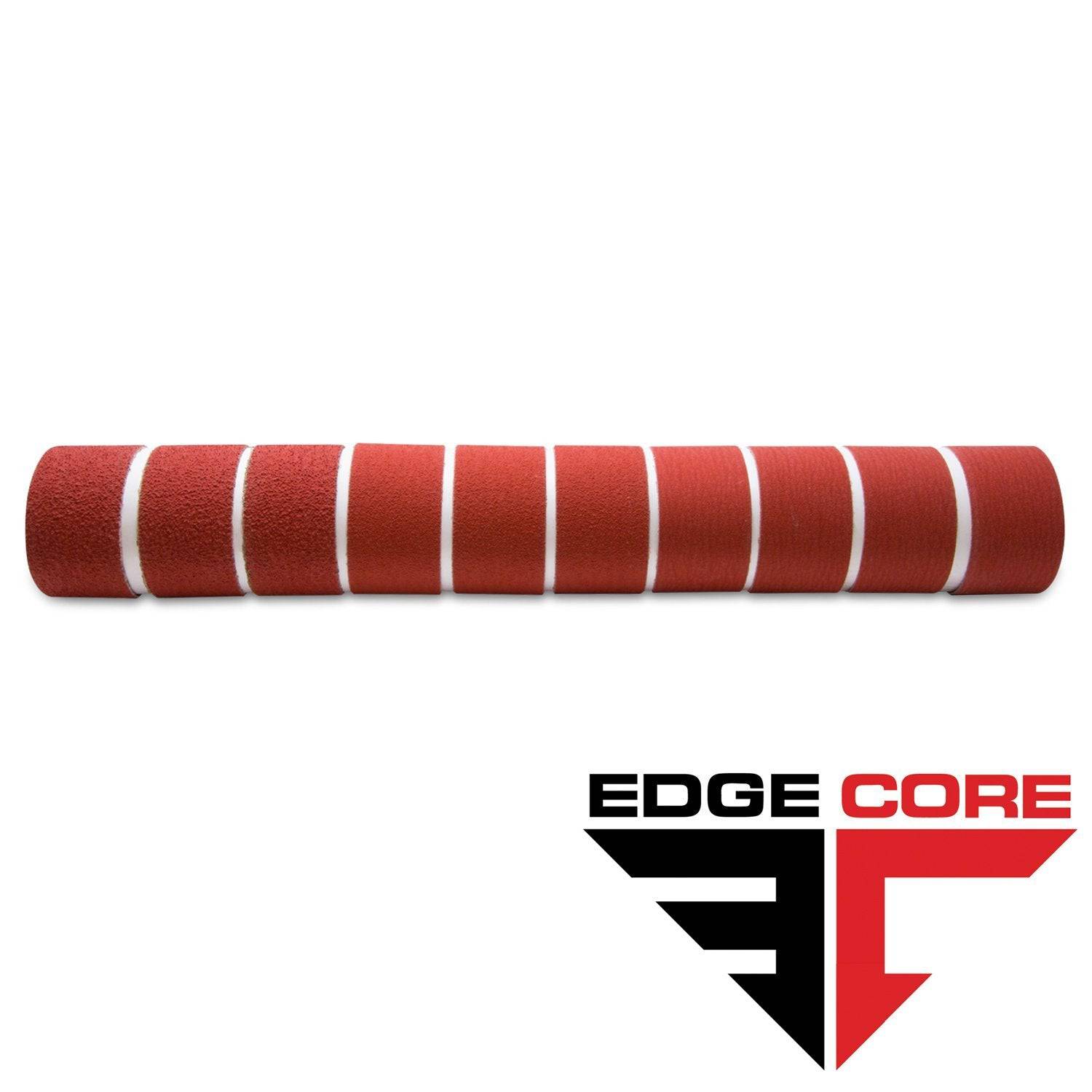
2 X 72 Inch Knife Makers Sanding Belts Assortment
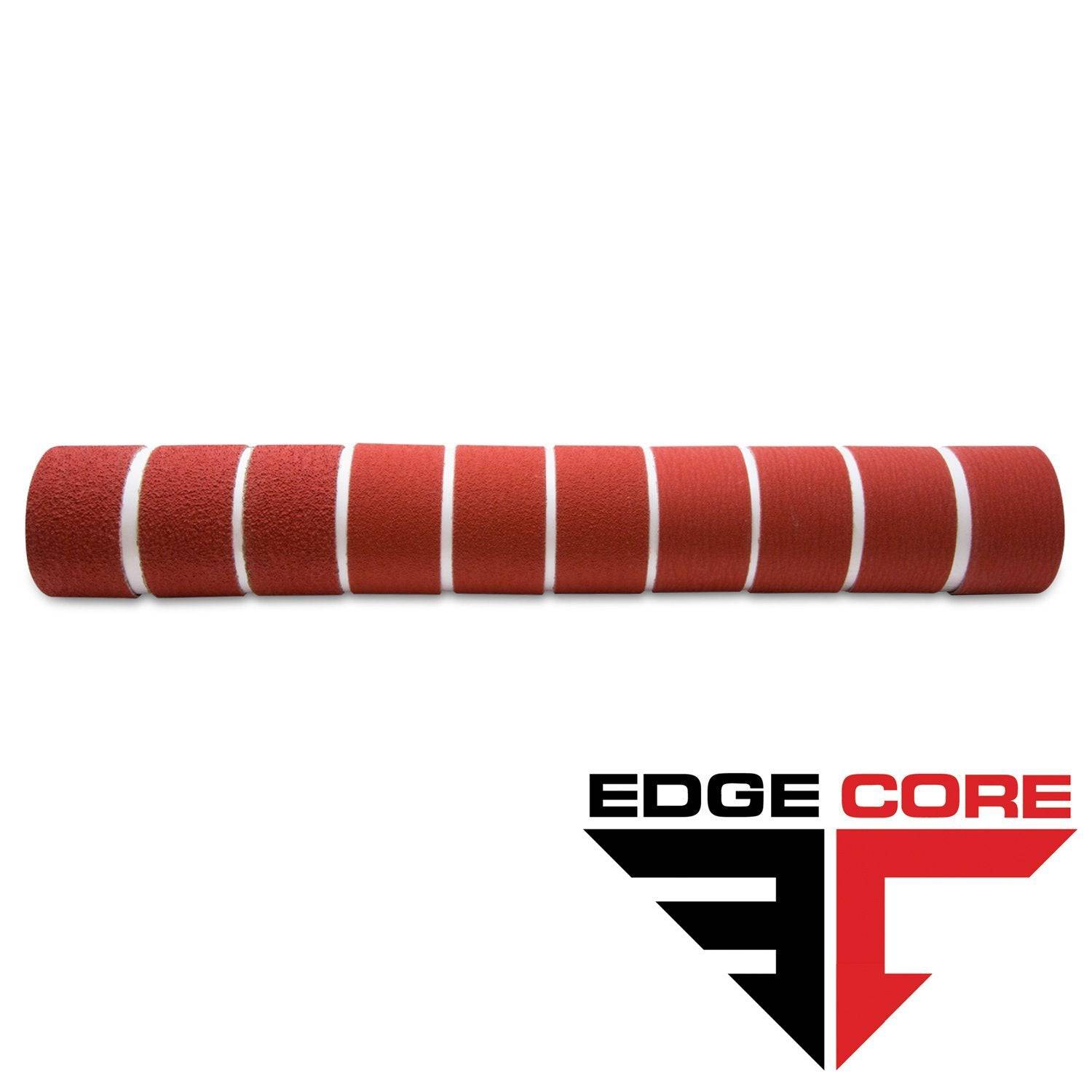
2 X 60 Inch Knife Makers Sanding Belts Assortment
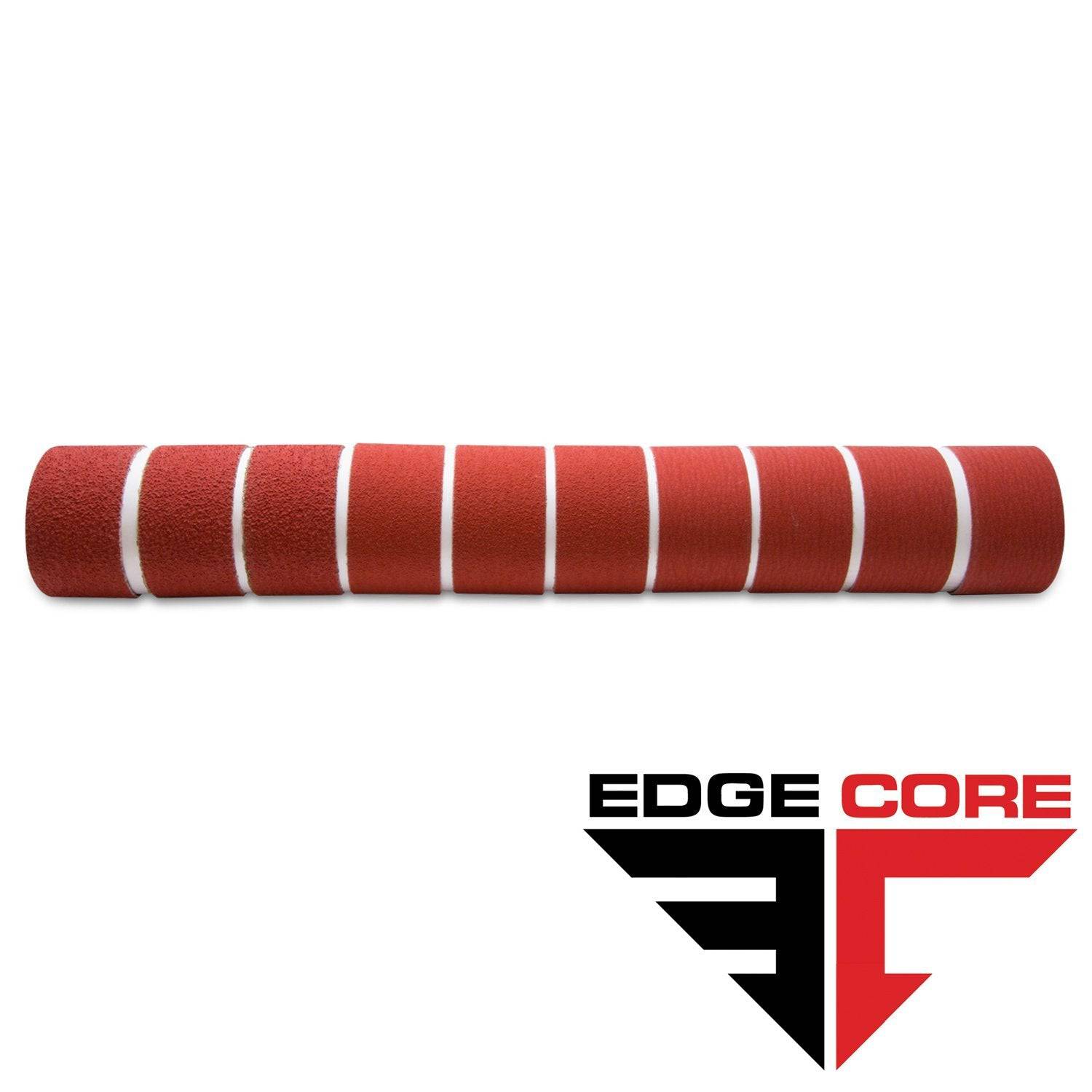
2 X 48 Inch Knife Makers Sanding Belts Assortment
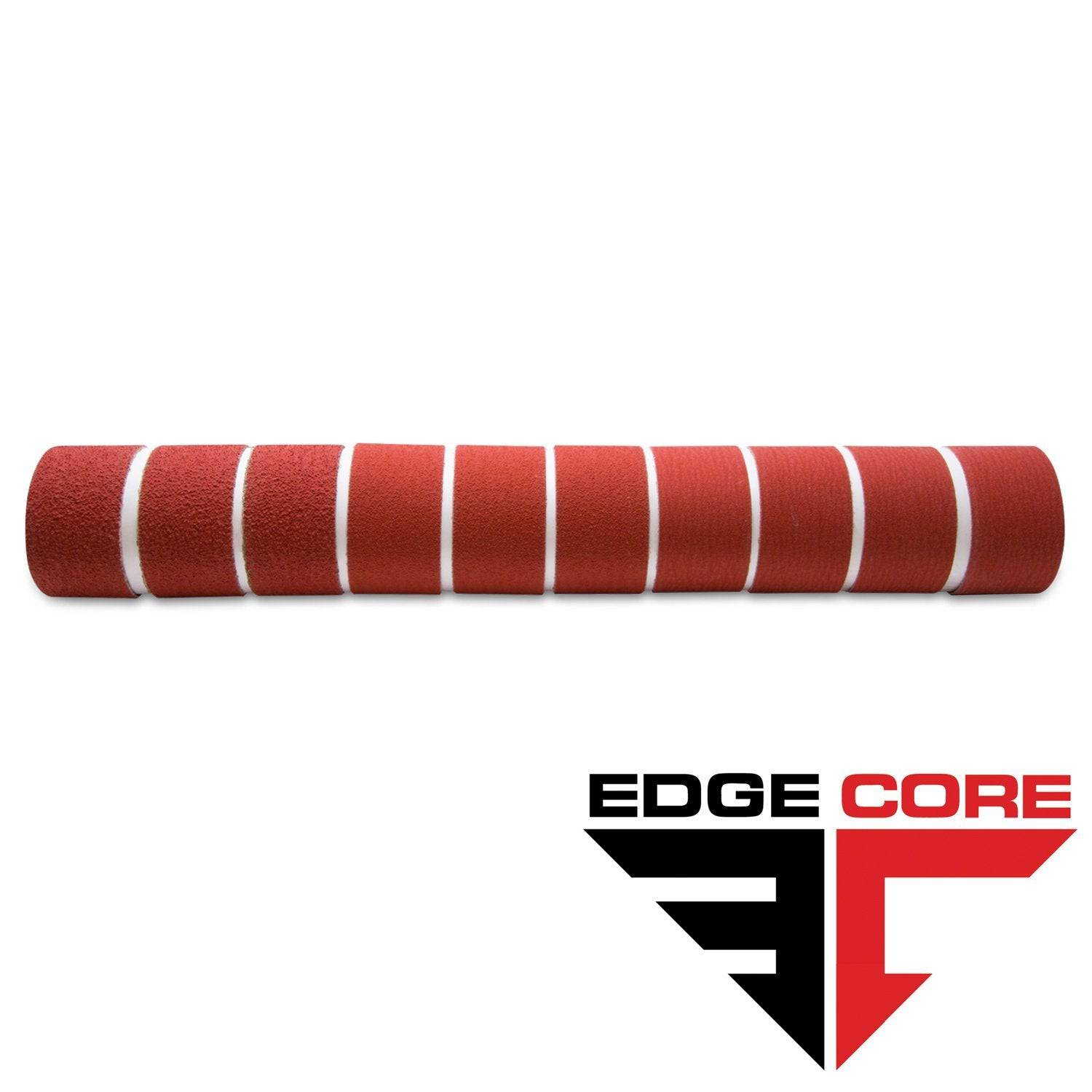
2 X 36 Inch Knife Makers Sanding Belt Assortment
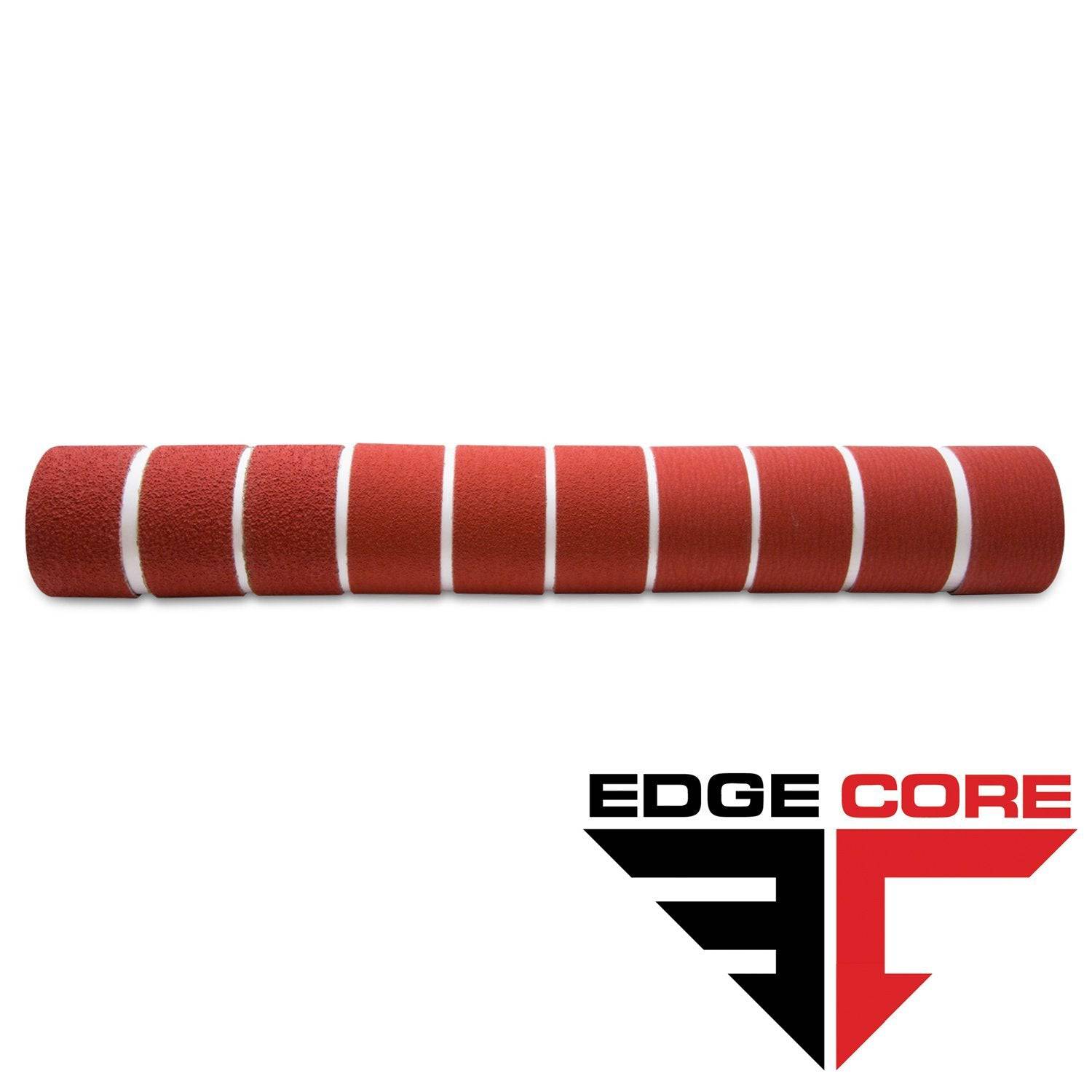
2 X 42 Inch Knife Makers Sanding Belts Assortment
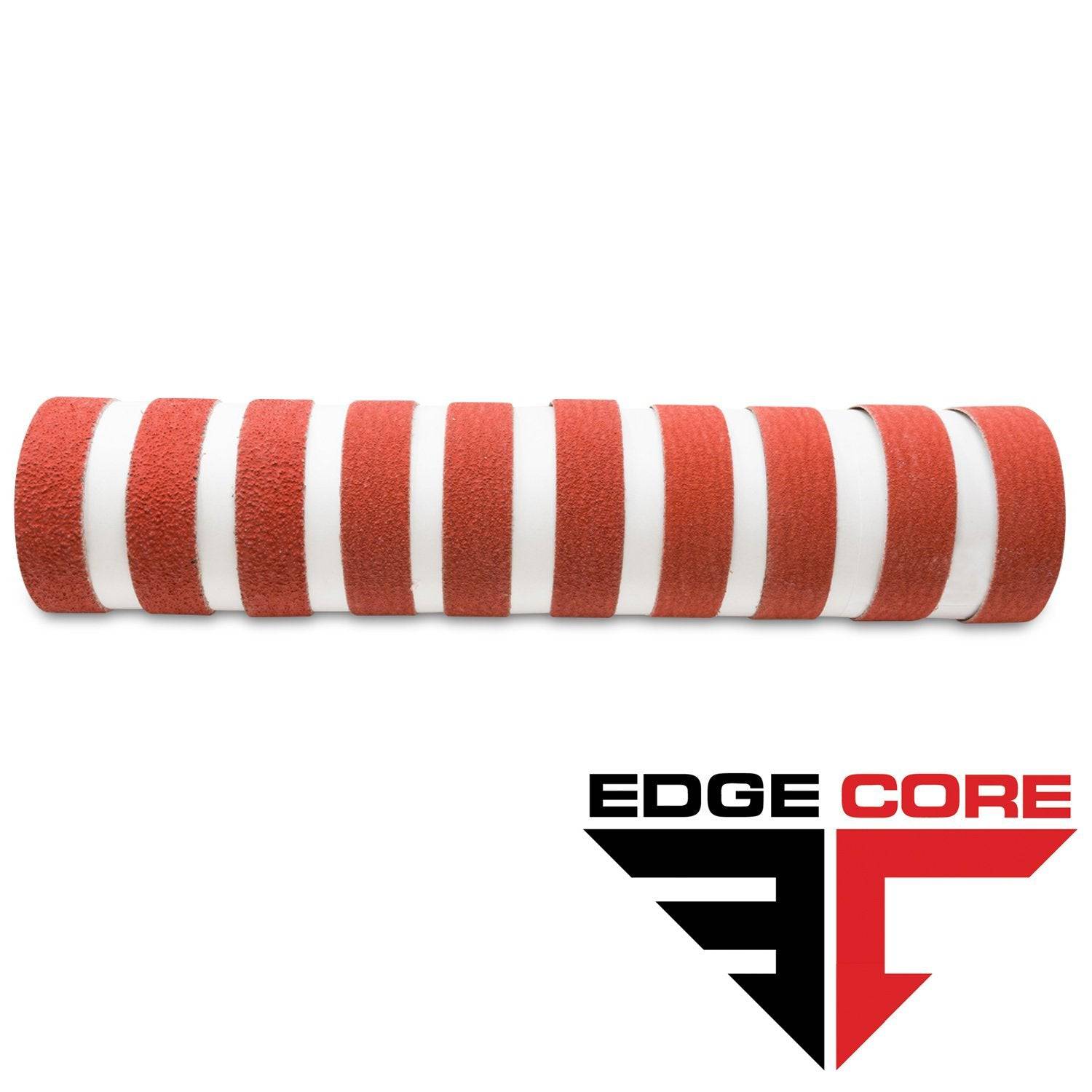
1 X 30 Inch Knife Makers Sanding Belts Assortment
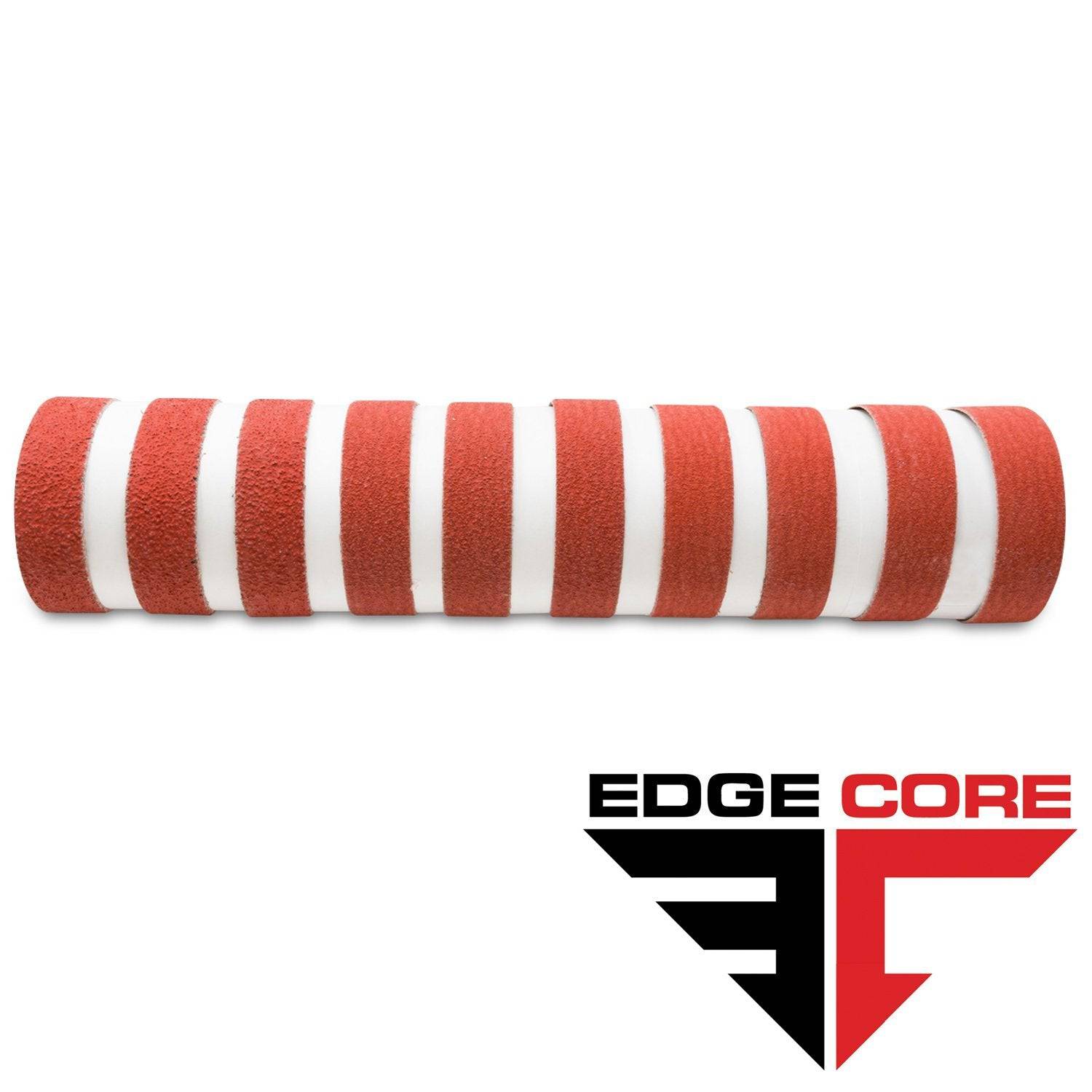
1 x 42 Inch Knife Makers Sanding Belt Assortment
Shop By Product Category


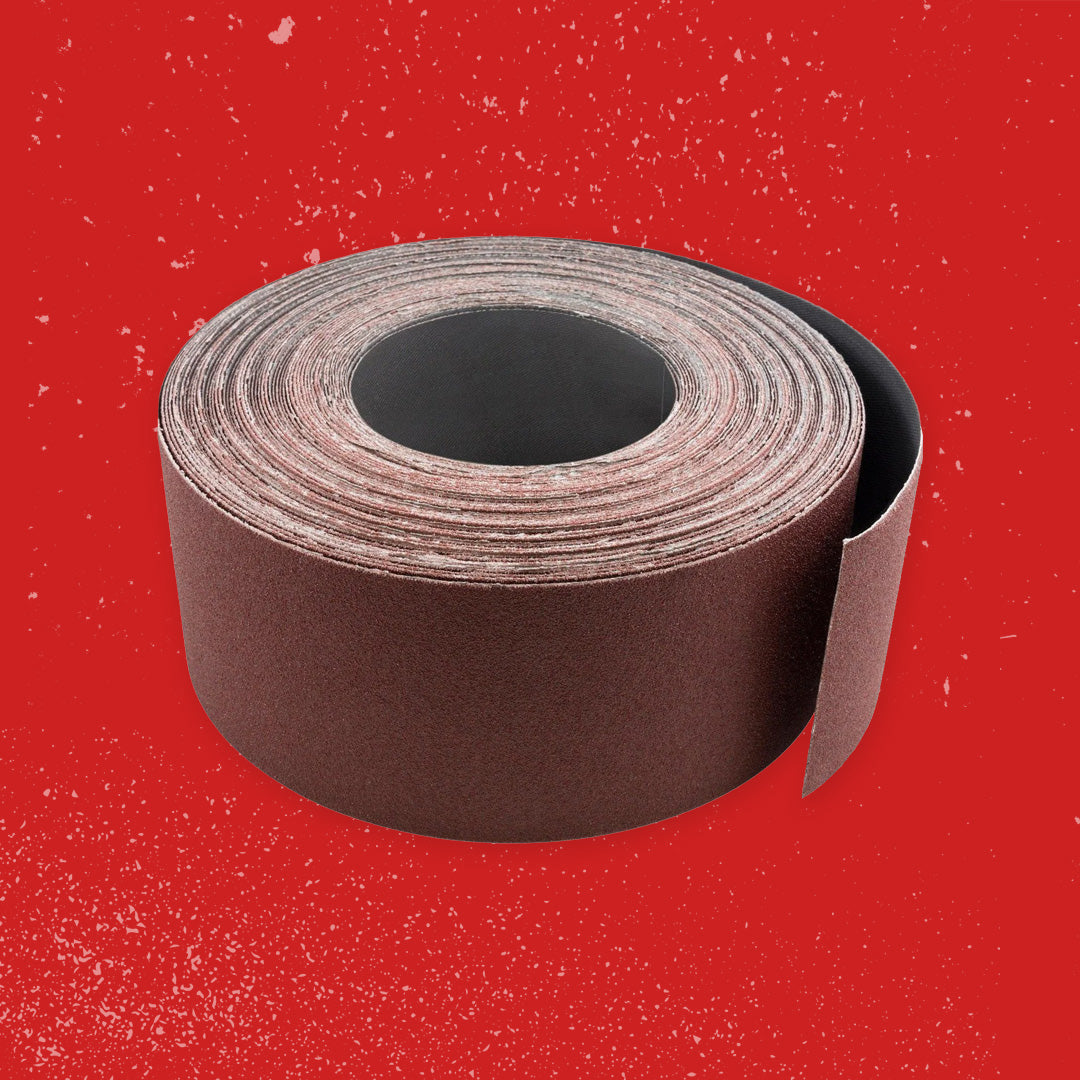


Why Choose Red Label?

